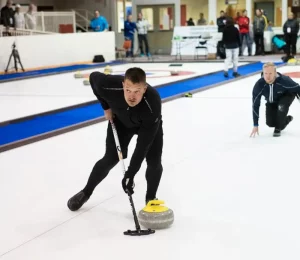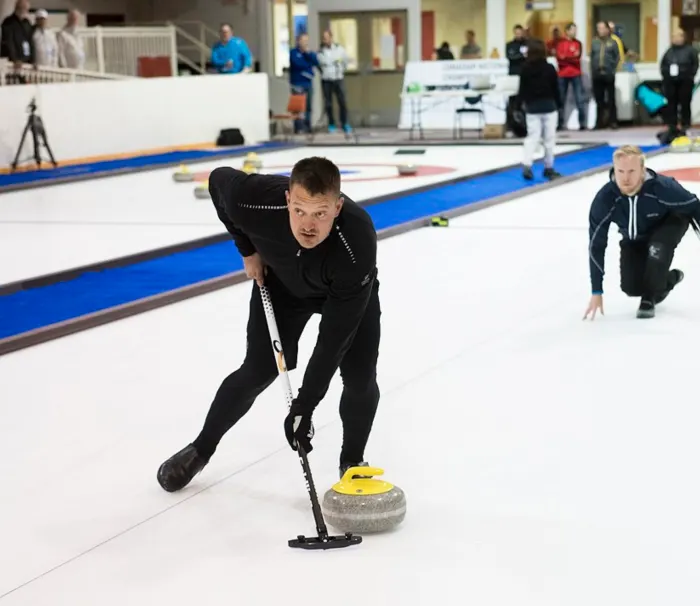In the world of curling, the sweeping technique has sparked considerable debate, especially following the infamous Broomgate scandal that rocked the sport eight years ago. This scandal led to a critical examination of how sweeping could influence a curling stone’s trajectory. The World Curling Federation, now known as World Curling, organized a “sweeping summit” near Ottawa in response to the controversy, aiming to understand and address the scientific aspects of sweeping. One significant outcome was the introduction of a standardized brush pad fabric for competitive play. However, despite this progress, lingering questions about the actual impact of sweeping on stone movement remained unresolved.

The focus then shifted to understanding the role of the sweeper themselves. Veteran curler Eugene Hritzuk, in collaboration with university professor Dr. Sean Maw, embarked on a series of experiments to investigate the sweeping techniques employed by athletes post-Broomgate. Their initial research, detailed in a March 2020 cover story for The Curling News, led to a commission by World Curling for further study in April 2023. The goal was to clarify how sweeping affects both the ice and the behavior of curling stones.
At the heart of this inquiry is whether current sweeping techniques are effective or if they inadvertently alter the stone’s path. Hritzuk observed that many curlers seem confused about the correct sweeping method. Some players appear to be polishing the ice, while others might be scratching it, potentially causing unintended changes in the stone’s direction. This confusion can disadvantage junior curlers who rely on proper technique for their success. The issue traces back to the Broomgate era when certain brushes were found to affect the ice surface in ways that could alter a stone’s movement unpredictably.

The 2016 Sweeping Summit was intended to address these issues by establishing new standards for brush head design, effectively banning the controversial “Frankenbrooms.” These brushes had caused significant problems, such as damaging the ice surface and leading to a misguided understanding of sweeping’s impact. Despite the introduction of new brush standards aimed at eliminating directional sweeping, many athletes continued to use techniques that seemed to defy these regulations, leading to ongoing confusion.
Hritzuk’s subsequent study with Dr. Maw aimed to resolve these uncertainties. Their research involved testing various brush heads and measuring their impact on the ice. The findings indicated that the new legal brushes did not cause significant scratching, debunking concerns that they might still influence stone direction. Instead, the research suggested that differences in stone-ice friction—rather than brushing technique—play a more crucial role in determining a stone’s curl. This insight emphasizes the need for curlers to refine their understanding of how sweeping affects gameplay.
The conclusion of this research highlights a critical aspect often overlooked: the science of sweeping and its role in curling. As noted by Darryl Horne, a veteran curling coach, sweeping remains one of the most undervalued and under-coached aspects of the sport. The ongoing challenge is to ensure that all curlers, from juniors to professionals, fully grasp the science behind their techniques to enhance their performance and maintain the integrity of the game.

